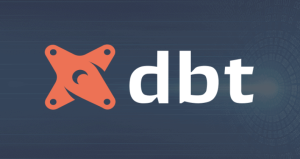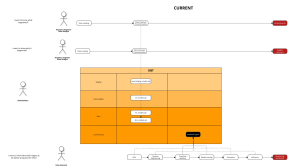In today’s data-driven world, achieving a strong bottom line means mastering the art of managing big data. A staggering 95% of businesses grapple with handling unstructured data, a primary contributor to operational inefficiencies and missed revenue opportunities. Addressing this widespread challenge is data modeling, a crucial process that not only simplifies data management but can directly influence a business’s financial performance.

At its core, data modeling is the art and science of creating a visual representation of an organization’s data. It involves designing a blueprint that outlines how data elements relate to each other, the structure in which they are stored, and the rules that govern their behavior. By creating these conceptual, logical, and physical models, businesses can understand the flow of information, establish data standards, and implement best practices for efficient data management.
However, data modeling is not just limited to large enterprises or tech companies. It is applicable to organizations of all sizes and across various sectors, including finance, healthcare, retail, and manufacturing. Regardless of the industry, businesses that effectively leverage data modeling techniques gain a competitive edge by…
1. Driving Revenue Growth
Data modeling can uncover hidden patterns and trends within your business, revealing opportunities for new products or services, identifying underperforming areas, and highlighting potential growth markets. These insights allow you to make informed decisions that directly drive revenue growth.
2. Reducing Costs
Efficient data modeling can streamline operations by improving data accessibility and reducing redundancy. By identifying and eliminating inefficient processes, data modeling can save considerable costs, making your operations leaner and more cost-effective.
In the following sections, we will delve deeper into the concept of data modeling, explore the various types, understand its significance, and uncover the benefits it offers. We will also discuss the challenges businesses may encounter and the best practices to maximize the value derived from data modeling efforts. Let’s begin!
What Is Data Modeling?
Data modeling is the process of creating a visual representation of an organization’s data. It involves defining the structure, relationships, and constraints of data elements to ensure accurate and efficient data storage and retrieval. By using data models, businesses can understand the flow of information, establish data standards, and improve overall data management practices.
What makes data modeling important is that it serves several purposes within an organization:
- Facilitates communication between stakeholders
- Enables database design and development
- Supports data integration efforts
- Aids in system analysis
By implementing data modeling techniques, businesses can achieve improved data organization, enhanced data integrity, efficient database design, and streamlined system analysis processes.
3 Types Of Data Models
Different types of data models are used to capture and represent the complexities of real-world data in a structured and organized manner. Each type of data model serves a specific purpose and provides a different level of abstraction, catering to the diverse needs of organizations. Let’s explore the three primary types of data models below.
1. Conceptual Data Model
This high-level view focuses on business concepts and their relationships. It provides a broad understanding of the data requirements without delving into technical details. To put it simply, the conceptual data model acts as a foundation for subsequent modeling stages and helps align business goals with data structures.
2. Logical Data Model
At this level, the focus shifts to defining the structure of data elements. The logical data model captures the entities, attributes, relationships, and constraints of the data in a standardized and independent manner. It aims to represent the data in a way that is agnostic to any specific database technology.
3. Physical Data Model
The physical data model translates the logical data model into a specific database implementation. It defines the tables, columns, indexes, keys, and other physical structures necessary to store and retrieve the data efficiently. The physical data model considers the characteristics and constraints of the chosen database management system.
Why Your Business Needs Data Modeling
Data modeling isn’t a mere technical exercise, but a powerful business strategy that directly contributes to financial performance. Here are some key ways that data modeling can enhance your bottom line:

1. Improved Data Organization
Data modeling ensures that data is structured and organized in a logical manner. It helps businesses understand the relationships between data elements, reducing redundancy and improving data consistency. With a well-designed data model, organizations can efficiently navigate and manage their data assets, leading to improved data quality and accessibility.

2. Enhanced Data Integrity
Data integrity is crucial for maintaining the accuracy and reliability of information. Through data modeling, organizations can define data constraints and validation rules. By enforcing these rules, data integrity is upheld throughout the data lifecycle. This ensures that the data is accurate, valid, and reliable, instilling confidence in decision-making processes.

3. Efficient Database Design
Properly designed databases enable efficient data storage and retrieval. Data modeling plays a key role in optimizing database design by identifying the most appropriate data structures and relationships. By implementing a well-designed physical data model, businesses can minimize data redundancy, improve data access times, and enhance overall database performance.

4. Understand Your Customers Better
By enabling a deep understanding of customers and market trends, data modeling can empower businesses to create more effective marketing strategies and develop new products or services that truly meet customer needs. This, in turn, can drive significant revenue growth and identify untapped markets, creating new revenue streams and further boosting profitability.

5. Mitigating Risk
By providing a clearer view of data and trends, data modeling can help businesses foresee potential risks and take preventive action. This not only prevents revenue loss but can also save substantial costs associated with damage control.

6. Cost Reduction Through Process Optimization
Data modeling provides clear visibility into business operations, illuminating areas for process optimization. By identifying bottlenecks, redundancies, and inefficiencies, data modeling enables businesses to streamline operations and reduce unnecessary costs. This lean approach leads to savings in resources, time, and ultimately, money.

7. Cost Savings Through Automation
With a well-implemented data model, businesses can automate various data management tasks, including data validation, integration, and reporting. This automation reduces the need for manual intervention, leading to significant savings in labor costs and freeing up your team to focus on strategic, revenue-generating tasks.
Challenges In Data Modeling
While data modeling is a powerful tool for organizations, it comes with its own set of challenges. Understanding and addressing these challenges is crucial for successful data modeling initiatives. Let’s explore some of the common ones your company may face.
-
Complexity and Scalability
As data volumes and complexity increase, data modeling becomes more challenging.
-
Data Integration
Integrating data from multiple sources can be complex.
-
Changing Business Needs
Businesses often undergo changes, such as mergers, acquisitions, or shifts in operations.
-
Data Quality and Cleansing
Data modeling relies on the assumption of high-quality data. However, in practice, data quality issues such as inconsistencies, incompleteness, and inaccuracies are common.
Over To You
While data modeling is a powerful tool for organizations, it comes with its own set of challenges. Understanding and addressing these challenges is crucial for successful data modeling initiatives. Let’s explore some of the common ones your company may face.
- Elevating Wellness through Data-Driven Personalization: Restore Case Study - November 11, 2023
- Revolutionizing Credit Risk Management: Ameriprise Financial’s ML Leap - November 10, 2023
- Elevating Customer Engagement: VinID’s Personalization Strategy - November 9, 2023



